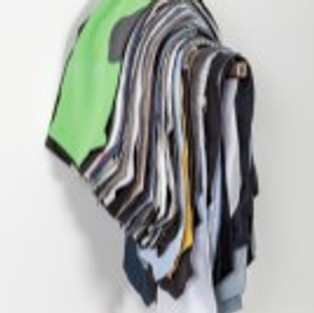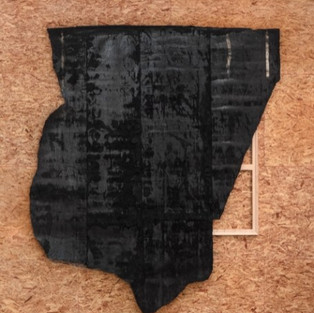Theaster Gates at Regen Projects
- artandcakela
- Oct 21, 2019
- 3 min read
Updated: Jan 16

Denim Cross with Plynth for Sacred Gifts © Theaster Gates, Courtesy Regen Projects, Los Angeles
What is Lost and What is Gained
Regen Projects, Los Angeles through November 2
Written by Lorraine Heitzman Theaster Gates is looking inward these days. As an artist best known for his projects in Chicago that center on investing in the black community, this show finds him redirecting his attention to the theme of divesting. It is a personal and psychological exploration about shedding the trappings of materialism told with subtlety and sophistication. There is some irony at play here because both Regen Projects and the artist (to some extent) are successful commercial entities. But Gates claims he is selling ideas in a conceptual boutique. The metaphorical storefront encourages the viewer to consider the desire to accumulate and the opposing, more challenging impulse to give away that which we hold dear.
Line Drawing For Shirt and Cloak at Regen Projects was partially inspired by the biblical verse from the Gospel of Matthew, 5:40, in which Jesus says, “If someone wants to sue you and take your tunic, let him have your cloak as well.” The artist eloquently translates his conflict between acquisition and attachment to beautiful clothes and his desire to rid himself of his wardrobe in the pursuit of freedom. Having felt the increasing demands as well as the rewards of his success, Gates believed they were both becoming a hindrance to his wellbeing.
Early in his career Gates was a ceramicist and the impulse to make things drove the shape of this project as much as the original conceit. If this was a purely spiritual act, or part of his social practice, for which he is well known, he could have just given away his clothes anonymously. But transformation and communication are key elements of his artistic process and they prevailed. Using the store as a symbol, he creates a space that implies commerce. He fills his “store” with ascots made from remnants of his wardrobe that are imaginatively displayed in different configurations. A quilt, clothes hangers and other items of cast-off clothing and materials are carefully placed around the gallery. Most of these items will not be given away literally, like the biblical verse that inspired the artist, but Gates has altered them and they are no longer the objects he originally cherished. Is it disingenuous to destroy valuable clothing in order to make valuable art? He understands that his signature confers value on even his castaways, but that would be a cynical interpretation. Instead, the experience of the show is one of purification, perhaps even regeneration.
There is an austere, almost elegiac ambiance in the room. “Ceiling Fixture for Quilt” and “Ceiling Fixture for Ascots” are two ambiguous metal shapes suspended from the ceiling. Absent the quilt and ascots of their titles, they remain mysterious, their function indecipherable. Without volume they suggest drawings. On one side of the gallery, “Memoriam 1”, “Memoriam 2” and “Memoriam 3” display multi-colored ascots draped neatly over bronze supports, and on the opposite wall, Wall Fixture for Ascots, a long row of cast bronze clothes hangers hang empty from a steel rod. Dominating the center of the gallery is Quilt Gantry, a large, bright quilt fashioned out of the artist’s clothing, thrown casually on over-sized wooden sawhorses, and scattered throughout the space are industrial components. Everywhere there are aprons, crosses and ascots, all fashioned from the artist’s clothes, sheets, curtains and quilted packing blankets. In a separate room, Gates can be heard singing, his voice pumped out from a huge speaker, interrupting the otherwise cloistered mood.
Gates has remarked that his choice of remaking his clothes into ascots is related to a late friend’s use of the garment. In that sense, these are personal memorials. In a larger sense, he is publicly avowing his materialism and giving thought and physical shape to his effort. Through the deliberate act of destroying his clothes, Theaster Gates provides an aesthetic experience that might be sufficient on purely visual terms, but he also compels us to reflect on the worth of things, and that is invaluable.
Regen Projects 6750 Santa Monica Blvd, Los Angeles, 90038
#losangeles #california #losangelesartist #TheasterGates #art #painting #shoeboxpr #laverne #losangelesart #contemporaryart #southerncalifornia #abstract #collage #regenprojects #artgallery #artinterview #gallery #museum #artandcake #artexhibition #installation #JoshuaWhite #fineart #artist #soloshow #mixedmedia #arts #artreview #artmagazine #ArtandCulture #exhibition #exhibit #lorraineheitzman










































































